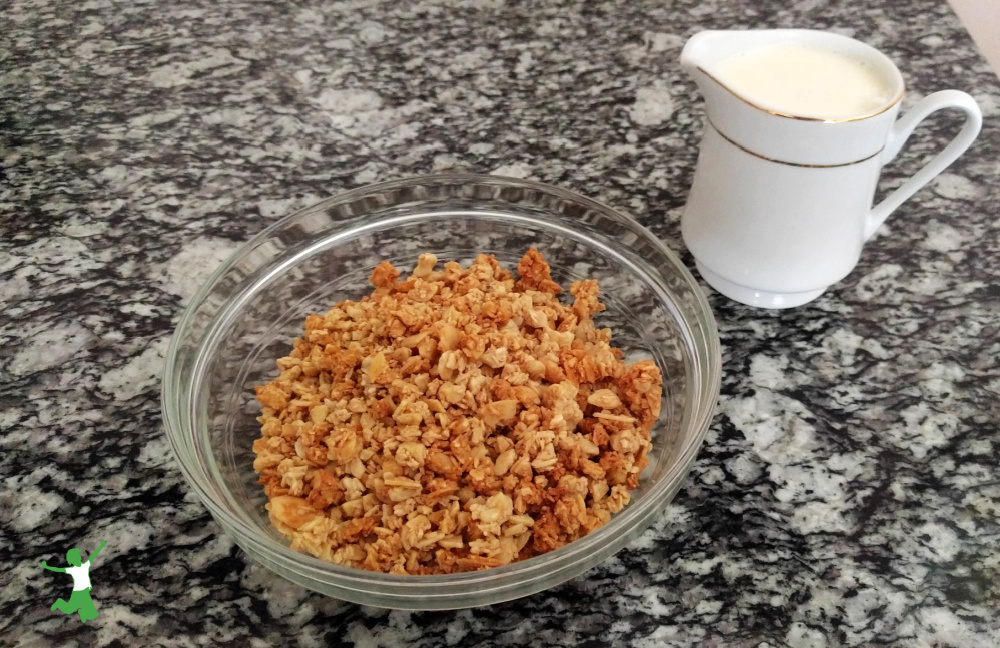The shocking truth about the processing that is required to make boxed breakfast cereal which makes it toxic even if organically certified.

Did you know that ALL boxed breakfast cereals are toxic?
In fact, organic boxed breakfast cereal is the most toxic of all!
How can this be?
It seems that everywhere you turn, a bowl of breakfast cereal is touted as a very healthy choice for your first meal of the day.
It’s not true, folks!
To make boxed breakfast cereal in the factory, the grains first have to be subjected to such intense pressure and heat that they actually liquefy into a slurry.
This slurry allows the grains to be quickly and easily shaped into the puffs, flakes, and other shapes that make each cereal distinct.
The manufacturing process used to make boxed cereal is called extrusion.
It is so violent and denaturing that the proteins in the grains are actually rendered toxic and allergenic by the process.
This is why organic boxed breakfast cereal is more toxic than nonorganic.
Organic boxed cereal is whole grain and has significantly more protein in it!
In other words, the more protein, the more toxic the boxed cereal.
The digestive system has no idea how to metabolize these warped, denatured protein molecules.
The undigested food particles putrefy in the gut. They are also food for pathogens to feed upon, which serves to strengthen them and crowd out good flora.
Stay away!
If you wish to eat cold breakfast cereal that is healthy, you must make your own.
Here are 7 homemade cereal recipes to try and enjoy to wean yourself off an unhealthy and addictive boxed cereal habit.
More Information
How to Adjust to the Taste of Soaked Oatmeal
Soaked Oatmeal Benefits Without the Soaking?
How to Make Oatmeal the RIGHT Way
Reference







What about home made granola? Most are made from oats…would this type of cereal be considered toxic too?
Can this cereal be dried in a dehydrator instead of the oven ( a gas stove heats up the house really quickly and that is not so good in the summer)?.. if so for how long?
How long does it take raw milk to sour for soaking? We were told it is good for drinking from 10-12 days or so.
It really depends on where you live, how fresh the milk is, and many other evironmental factors. For example, during the winter, when the milk stays very cold in the car all the way from pick-up to the refrigerator at home, it will take MUCH longer to clabber, and of course, the very opposite in the summer. Leaving the milk out on the counter for 1 to 2 days can speed up the process, but sometimes even THAT can take up to 3 days, even down here in hot, humid Florida.
I would love to read the studies on how proteins are affected by the extrusion process, and how those proteins affect our health. Could you point me to the studies please? Also, thanks for the recipe!
Dirty Secrets of the Food Processing Industry on westonaprice.org is a great read on the subject.
Dumb question here – do rolled oats fall into the bad/toxic category due to the processing?? thanks so much for all your great information. I’m still making small steps, but enjoying the journey. 🙂
kendra
Yes it does make a difference. See if your healthfood store can order some.
One more question. If my flour is not freshly ground do I still need to soak it?
Sarah freshly grinds the flour so as to ensure the maximun ammount of nutrients are still in the finish product. The soaking is to break down antinutrients, such as phytic acid, and gluten, so as to make the grains much easier to digest. So, yes, you should absolutely soak your flour.
Sarah, I dont have the extract. Does it make that big of a difference on the flavor?
I use a mix if vanilla and almond and it’s really good!
Toxic proteins … the proteins in the cereal are completely denatured and rendered toxic by the processing. This is why whole grain cereal is more toxic than cheap cereal made with refined flour. Whole grain cereal is higher in protein.